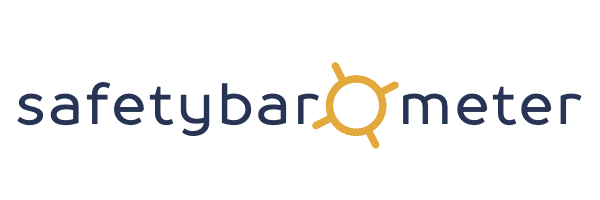
Innovative technologies and trends in industrial safety
According to Eurostat statistics, the European Union suffers from 3,347 fatal and 2.88 million non-fatal workplace accidents in the year 2021. More than a fifth of these fatal accidents occur in the construction sector. These figures underscore the importance of workplace safety and the need for innovation and adaptation to new risks. This week, we explore the latest developments shaping the future of industrial safety, from AI-driven safety systems to advanced wearables. Find out how these innovations are contributing to a more efficient and safer industrial world.
I. Wearables
The silent guardians of industrial safety
Advanced wearables have emerged as crucial tools in industrial safety. These devices, ranging from smartwatches to smart glasses, now offer functionalities such as monitoring vital signs, detecting exposure to hazardous substances, and location tracking of workers. In industries such as construction, manufacturing, and mining, they are being used for health monitoring and safety checks, contributing significantly to preventing accidents and improving work processes.
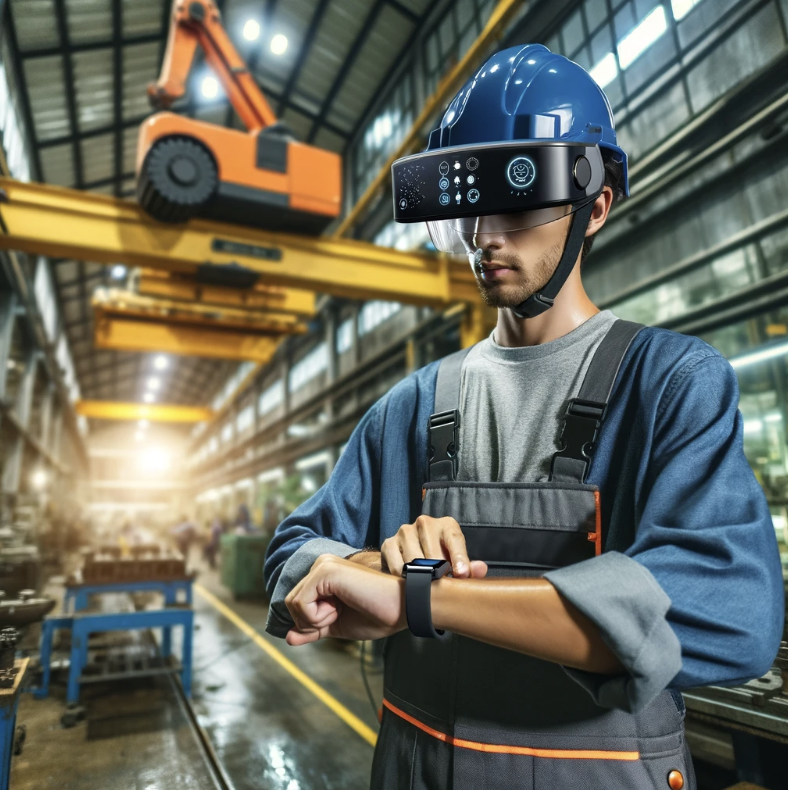
Interestingly, some wearables alert workers to immediate hazards, such as approaching heavy machinery or high levels of toxic substances, via haptic perception (sensory perception through touch receptors). This technology collects a wealth of data that is used for analysis to identify trends and improve safety protocols. The future of wearables in the industrial sector looks promising with developments such as AI integration, allowing these devices to become ever smarter and provide personalized alerts. With the increasing adoption of these technologies, we can expect a safer and more efficient industrial work environment.
Utilization of wearable technologies across industrial sectors
| Industry Sector | Wearable Type | Application |
|---|---|---|
| Construction | Smart Helmets | Real-time monitoring of safety conditions and location tracking |
| Manufacturing | Fitness Trackers | Monitoring employee health, such as heart rate and stress levels |
| Mining | Gas Detection Wearables | Detection of hazardous gases and air quality monitoring |
| Logistics | Smartwatches | Communication and time management, tracking employee efficiency |
| Energy | Wearables with Haptic Feedback | Alerts for excessive exposure to radiation or hazardous materials |
| Pharmaceutical | Hygiene Monitoring Wearables | Monitoring sanitary conditions and personal hygiene |
II. Contractor Management Systems
Innovating for collaborative safety
Contractor Management Systems (CMS) have become pivotal in fostering a culture of safety across various industries. Initially conceptualized to streamline contractor coordination and compliance, these systems have evolved with advancements in technology. They now serve as centralized platforms for managing contractor qualifications, safety training, and compliance monitoring. Widely used in sectors like construction, energy, pharmaceuticals and manufacturing, CMS such as Onyx One offer features such as digital work permits, safety induction processes, and real-time compliance tracking.
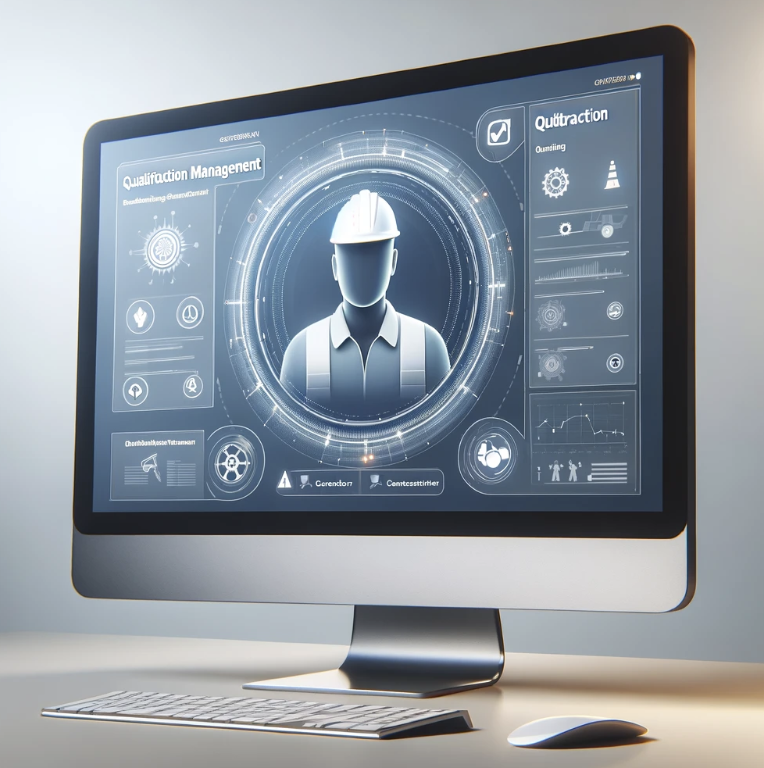
This integration not only assures consistent safety standards but also facilitates seamless communication between organizations and their contractors, leading to a safer and more efficient workplace. The introduction of AI and machine learning within these systems further enhances their capability to predict risks and manage safety protocols proactively.
Key functionalities of a Contractor Management System
| Functionality | Description |
|---|---|
| Qualifying (Sub)contractors | Management of contractor qualifications to meet required standards |
| Managing Turnarounds | Efficient management of contractor activities during critical project phases |
| Auditproof | Compliance with regulatory and internal audit requirements |
| Digital Contractor Training | Digital training modules for contractors on safety policies |
| Instant Communication | Real-time communication between managers and contractors |
| Automated Follow-up | Automatic tracking and management of contractors, reducing human error |
| Registration and Access Control | Advanced registration of contractors, controlling site access and permissions |
| Certificate and Validity Tracking | Automated tracking of certificates and their expiration dates |
III. Drones
Revolutionizing safety and efficiency in industrial operations
Drones, once primarily considered tools for photography and recreation, have rapidly become integral to enhancing safety and efficiency in various industrial sectors. Their ability to access and monitor hard-to-reach areas has revolutionized safety inspections, particularly in sectors like construction, mining, and energy. Drones equipped with cameras and sensors provide detailed aerial views, enabling the identification of potential hazards and structural issues without exposing workers to risks.
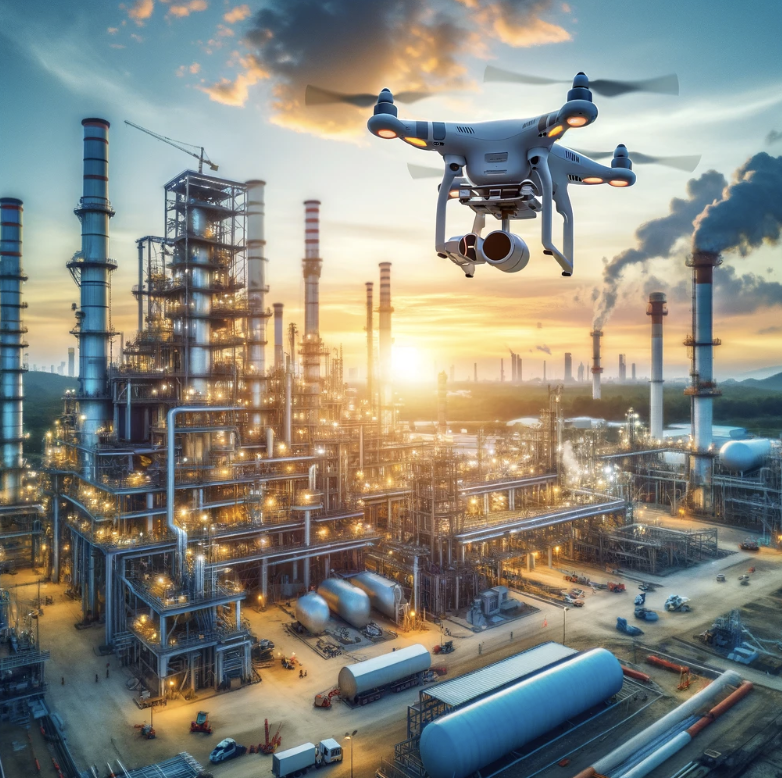
Moreover, they play a crucial role in emergency response, being able to quickly survey disaster sites or hard-to-access areas during accidents. Some advanced models are even capable of carrying emergency supplies or equipment to isolated locations. The real-time data gathered by drones not only aids in immediate decision-making but also contributes to long-term safety planning and analysis. As drone technology continues to evolve, their applications in industrial safety are expected to expand, offering more sophisticated solutions for risk management and operational efficiency.
Industrial applications of Drone Technology
| Industry Sector | Application of Drones |
|---|---|
| Construction | Inspecting building sites, monitoring progress, and identifying potential safety hazards |
| Mining | Surveying mines, mapping underground areas, and monitoring environmental conditions |
| Energy | Inspecting power lines, wind turbines, and solar panels for maintenance and safety |
| Agriculture | Crop monitoring, land surveying, and precision farming techniques |
| Oil & Gas | Pipeline inspection, flare stack monitoring, and site surveying |
| Emergency Response | Surveying disaster sites, search and rescue operations, and delivering emergency supplies |
IV. IoT and Smart Sensors
Pioneering data-driven safety in industry
Internet of Things (IoT) and smart sensors have transformed into the nerve centers of industrial safety, marking a significant shift in how industries monitor and manage operations. These technologies enable real-time data collection and analysis, offering insights into machine performance, environmental conditions, and worker activity. Especially prevalent in sectors like manufacturing, logistics, and energy, IoT devices and sensors provide critical information for preventive maintenance, hazard detection, and efficiency optimization.
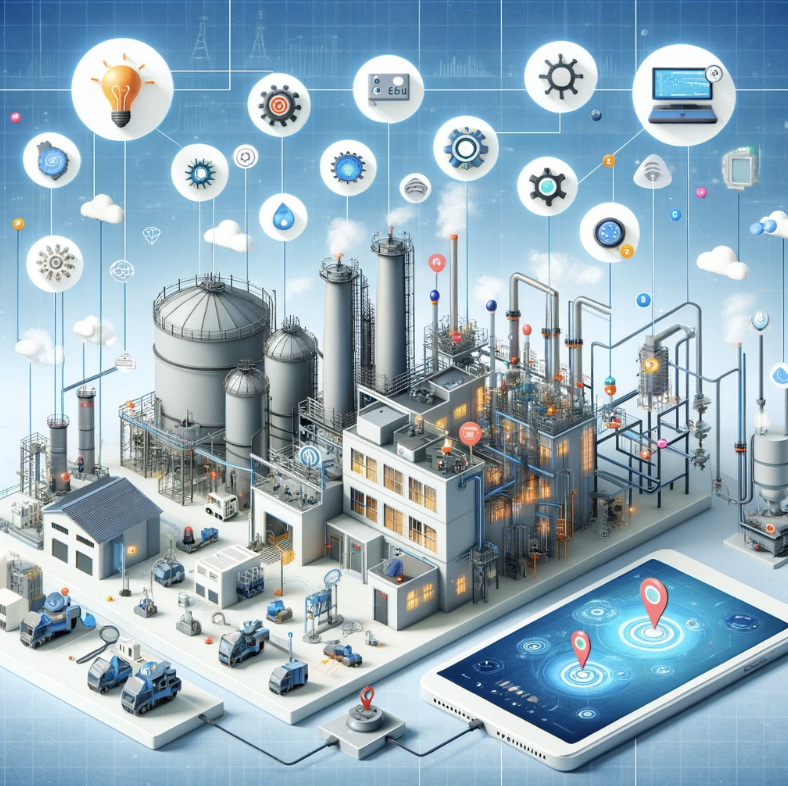
For instance, in manufacturing, sensors can detect equipment malfunctions before they lead to accidents, while in logistics, IoT-enabled devices can track the movement of goods and ensure compliance with safety standards. As these technologies continue to advance, their role in predictive analytics and proactive safety measures is set to become more prominent, signaling a new era of data-driven industrial safety management.
Diverse applications of IoT and Smart Sensors in industry
| Sector | Application of IoT and Smart Sensors |
|---|---|
| Manufacturing | Equipment malfunction detection, process optimization, and predictive maintenance |
| Logistics | Goods tracking, environmental condition monitoring, and compliance with safety standards |
| Energy | Monitoring of power grids, wind turbines, and solar panels for performance and safety |
| Construction | Structural integrity monitoring and on-site safety conditions |
| Agriculture | Soil quality analysis, crop monitoring, and automated irrigation systems |
| Healthcare | Patient monitoring devices and equipment performance tracking |